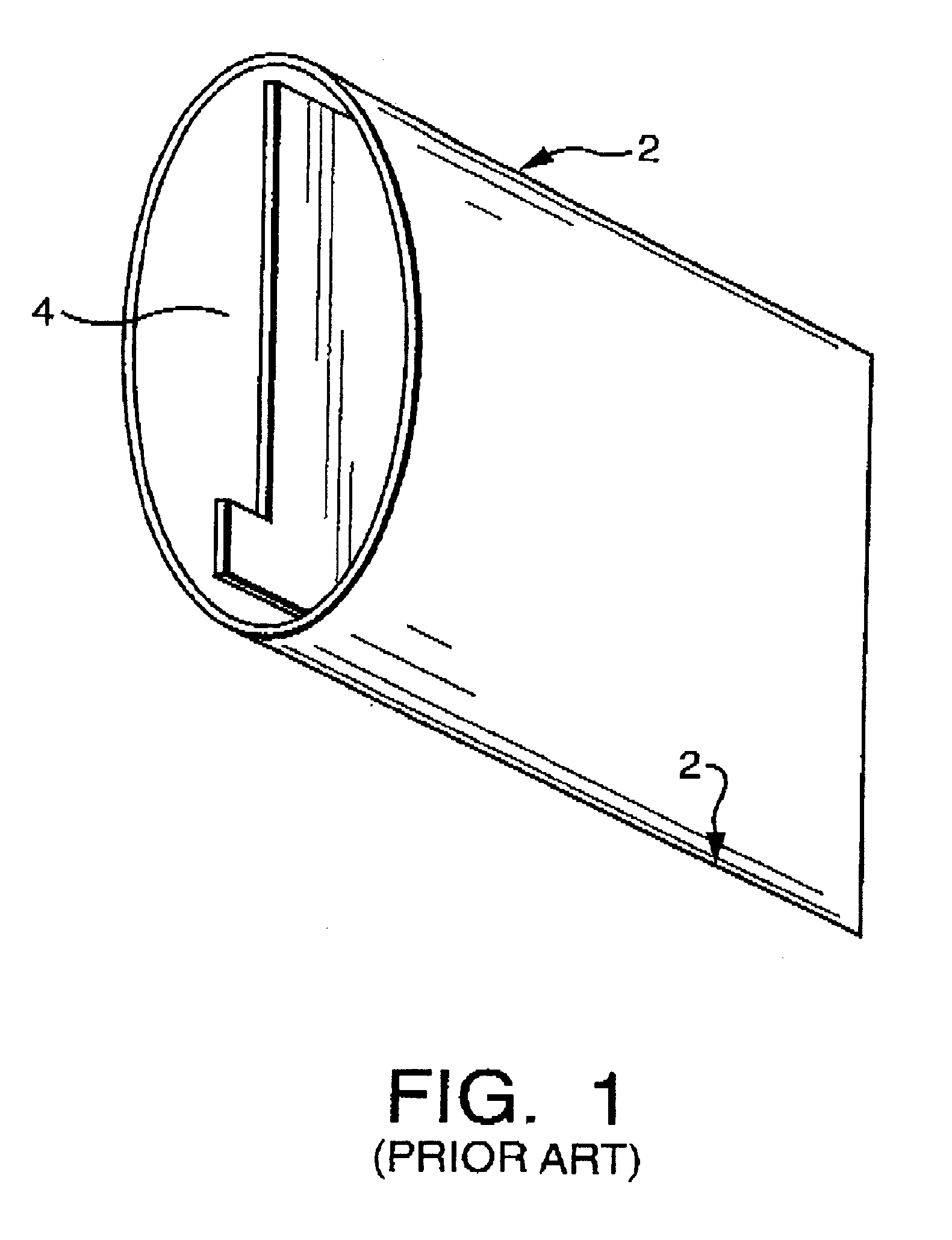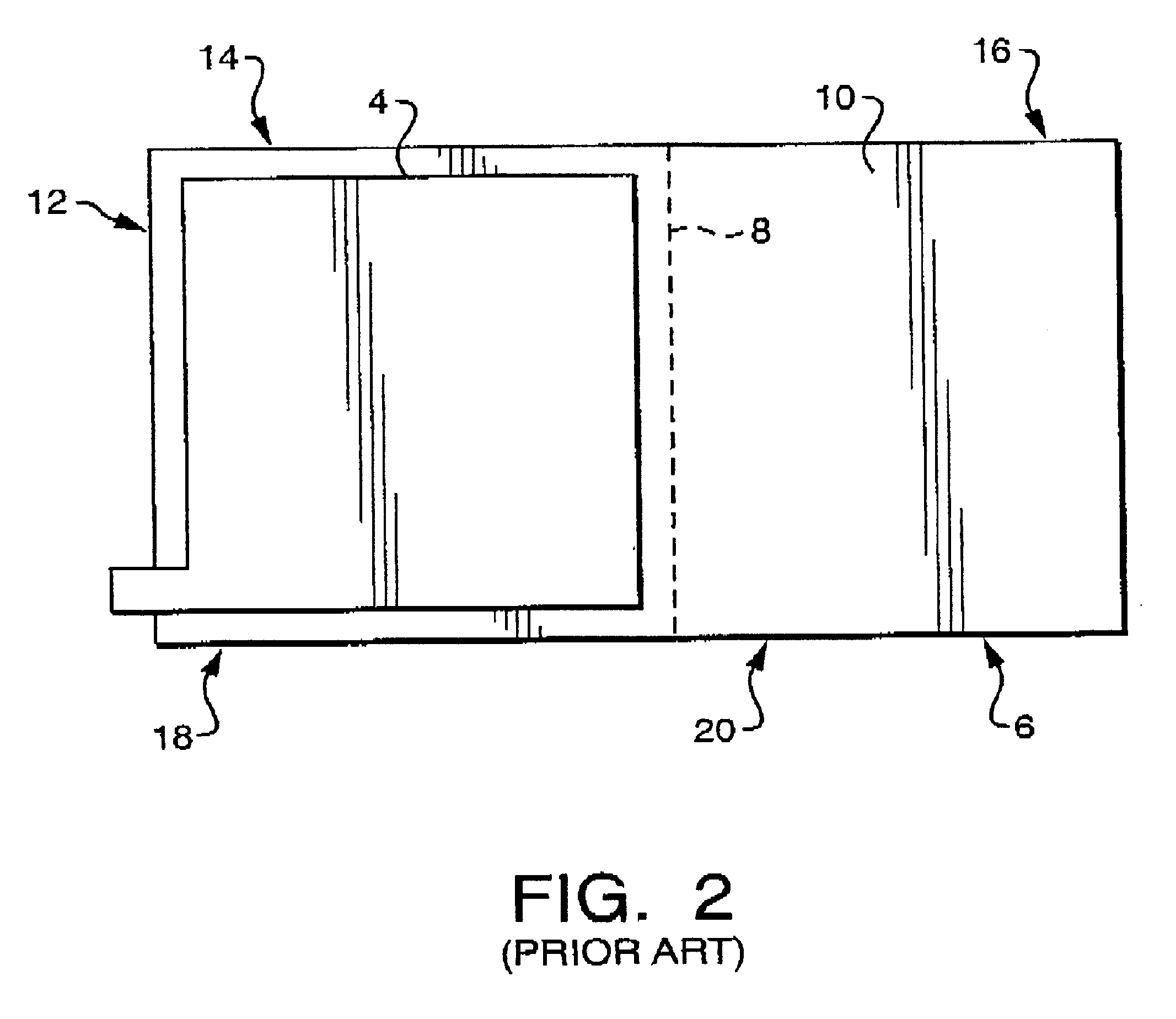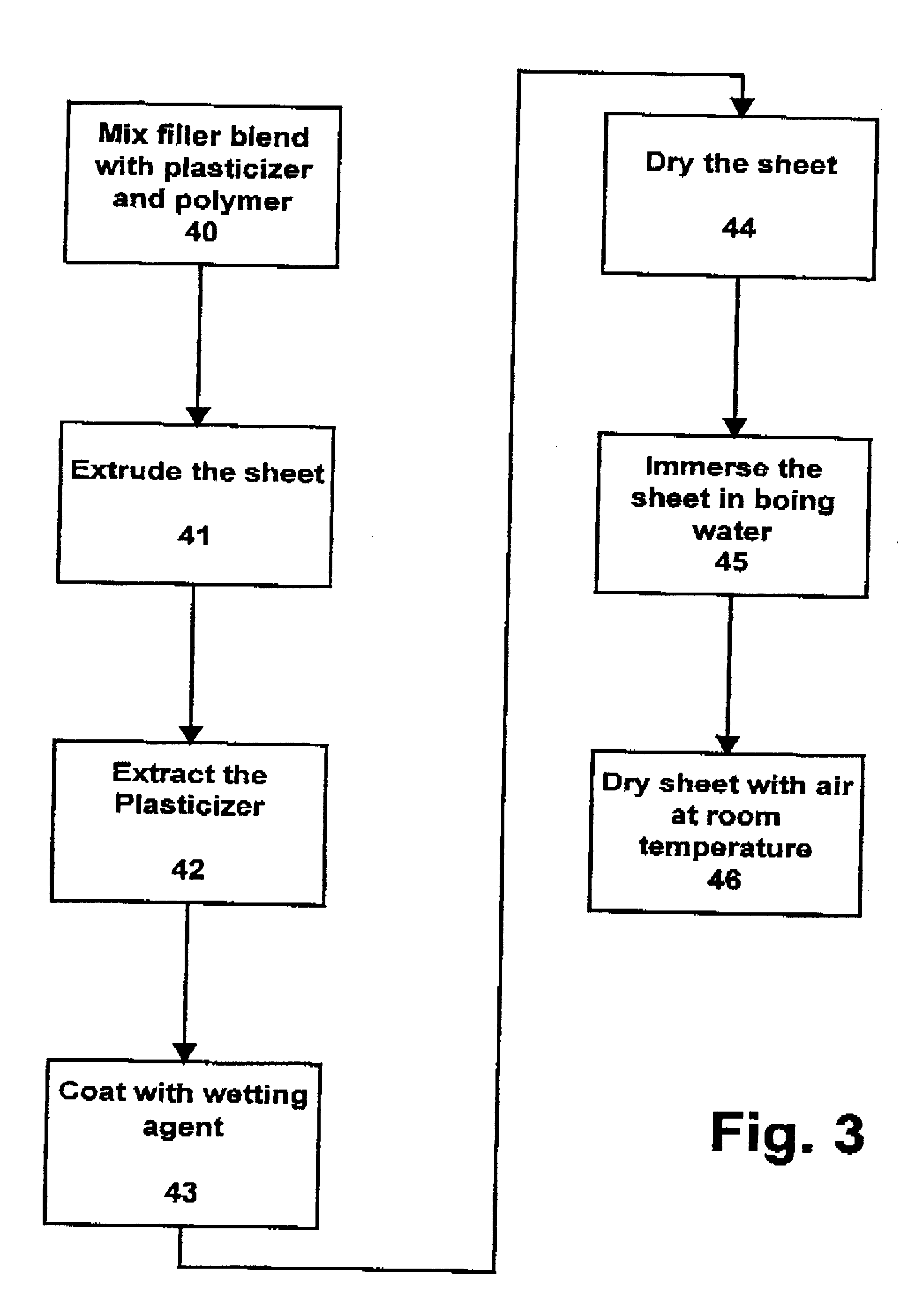Microporous membrane battery separator for silver zinc batteries
a microporous membrane and battery separator technology, applied in the direction of cell components, alkaline accumulators, electrical equipment, etc., can solve the problems of high capacity loss and short cycle life, limited application of silver zinc batteries, and high labor assembly costs of other batteries, so as to improve cycle life, calendar life, and performance
- Summary
- Abstract
- Description
- Claims
- Application Information
AI Technical Summary
Benefits of technology
Problems solved by technology
Method used
Image
Examples
example 2
A blend of 5 parts of ultra fine titanium dioxide and 95 parts of pigment grade titanium dioxide was prepared for extrusion. 19.0 pounds of filler blend was mixed with 1.0 pound of UHMW polyethylene with molecular weight minimum 3 million and with 8 pounds of processing oil. The resulting dryblends was transferred to a hopper for extrusion. The extruded sheet of each filler blend was extracted completely with hexane and coated with an aqueous solution of wetting agent consisting of dodecylphenoxy polyethoxy ethanol. The resulting microporous membrane consists approximately of 5% polymer and 95% filler. The resulting membrane had an average pore diameter of 0.06 microns.
example 3
The coated membrane produced in example 1 was immersed in boiling water or 1 minute and then dried at room temperature. The membrane shrunk 10-20% in MD (machine direction).
example 4
The coated membrane produced in example 2 was immersed in boiling water for 1 minute and then dried at room temperature. The membrane shrunk 10-20% in MD (machine direction).
PUM
| Property | Measurement | Unit |
|---|---|---|
| particle diameter | aaaaa | aaaaa |
| particle diameter | aaaaa | aaaaa |
| pore diameter | aaaaa | aaaaa |
Abstract
Description
Claims
Application Information
 Login to View More
Login to View More - R&D
- Intellectual Property
- Life Sciences
- Materials
- Tech Scout
- Unparalleled Data Quality
- Higher Quality Content
- 60% Fewer Hallucinations
Browse by: Latest US Patents, China's latest patents, Technical Efficacy Thesaurus, Application Domain, Technology Topic, Popular Technical Reports.
© 2025 PatSnap. All rights reserved.Legal|Privacy policy|Modern Slavery Act Transparency Statement|Sitemap|About US| Contact US: help@patsnap.com



